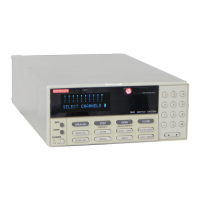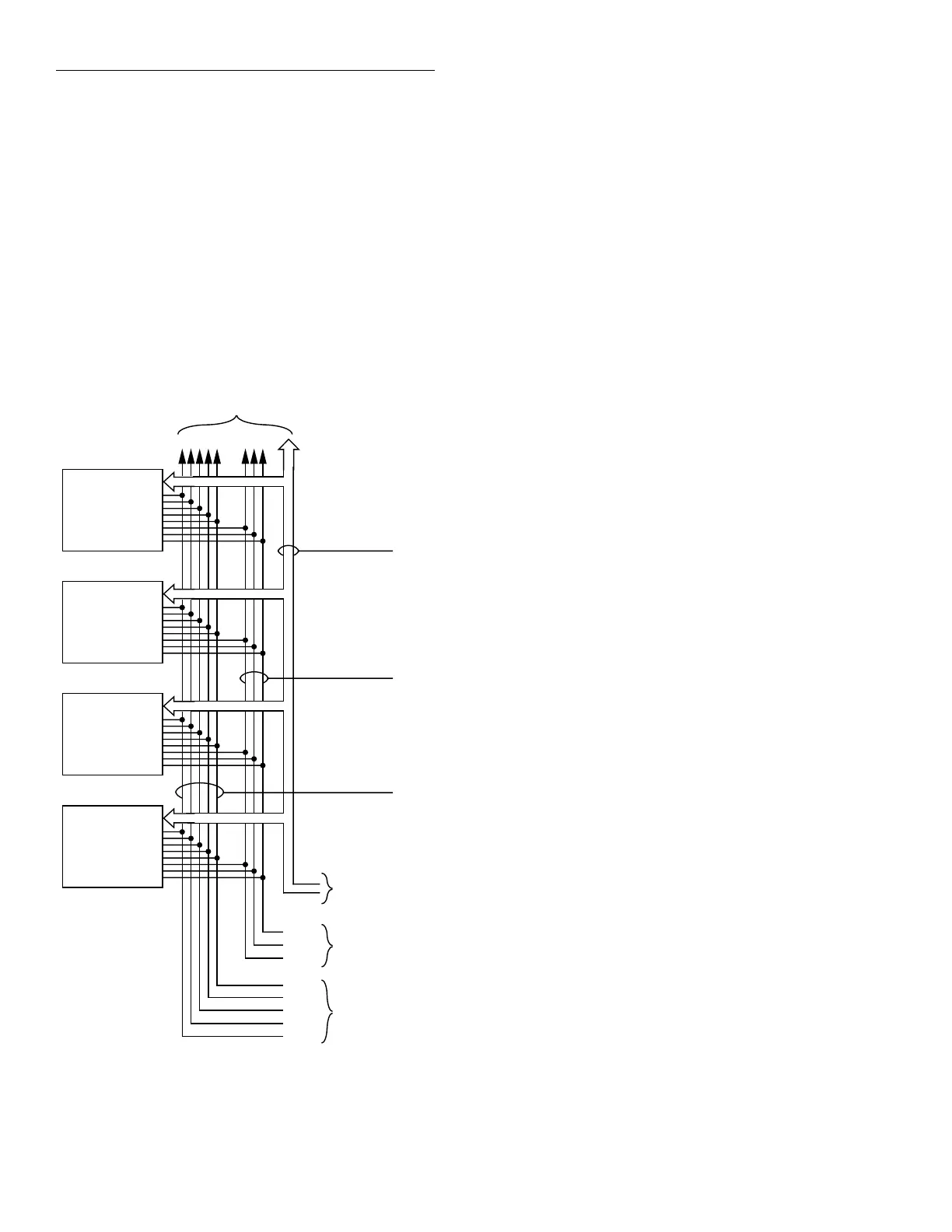IEEE-488 Bus Overview
D-2
tener receives data. Depending on the type of
instrument, any particular device can be a talker only,
a listener only or both a talker and listener.
There are two categories of controllers: system control-
ler, and basic controller. Both are able to control other
instruments, but only the system controller has the ab-
solute authority in the system. In a system with more
than one controller, only one controller may be active at
any given time. Certain protocol is used to pass control
from one controller to another.
.
The IEEE-488 bus is limited to 15 devices, including the
controller. Thus, any number of talkers and listeners up
to that limit may be present on the bus at one time. Al-
though several devices may be commanded to listen si-
multaneously, the bus can have only one active talker,
or communications would be scrambled.
A device is placed in the talk or listen state by sending
an appropriate talk or listen command. These talk and
listen commands are derived from an instrument’s pri-
mary address. The primary address may have any val-
ue between 0 and 31, and is generally set by rear panel
DIP switches or programmed in from the front panel of
the instrument. The actual listen address value sent out
over the bus is obtained by ORing the primary address
with $20. For example, if the primary address is 27 dec-
imal ($07), the actual listen address is $27 ($27 = $07 +
$20). In a similar manner, the talk address is obtained
by ORing the primary address with $40. With the
present example, the talk address derived from a pri-
mary address of 7 decimal would be $47 ($47 = $07 +
$40).
The IEEE-488 standards also include another address-
ing mode called secondary addressing. Secondary ad-
dresses lie in the range of $60-$7F. Note, however, that
many devices, including the Model 7001, do not use
secondary addressing.
Once a device is addressed to talk or listen, the appro-
priate bus transactions take place. For example: if the
instrument is addressed to talk, it places its data string
on the bus one byte at a time. The controller reads the
information and the appropriate software can be used
to direct the information to the desired location.
Bus Lines
The signal lines on the IEEE-488 bus are grouped into
three different categories: data lines, management lines
and handshake lines. The data lines handle bus data
and commands, while the management and hand-
shake lines ensure that proper data transfer and opera-
tion takes place. Each bus line is active low, with
approximately zero volts representing a logic 1 (true).
The following paragraphs describe the operation of
these lines.
DEVICE 1
ABLE TO
TALK, LISTEN
AND CONTROL
(COMPUTER)
DEVICE 3
ONLY ABLE
TO LISTEN
(PRINTER)
DEVICE 4
ONLY ABLE
TO TALK
DAV
NRFD
NDAC
IFC
ATN
SRQ
REN
EOI
D IO1 ... 8 DATA
(8 LINES)
HANDSHAKE
BUS
MANAGEMENT
DATA BUS
DATA BYTE
TRANSFER
CONTROL
GENERAL
INTERFACE
MANAGEMENT
DEVICE 2
ABLE TO
TALK AND
LISTEN
7001
TO OTHER DEVICES
Figure D-1
IEEE-488 bus configuration
Artisan Scientific - Quality Instrumentation ... Guaranteed | (888) 88-SOURCE | www.artisan-scientific.com

